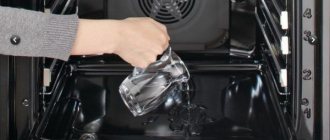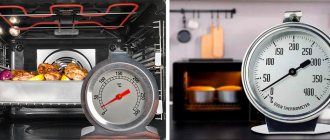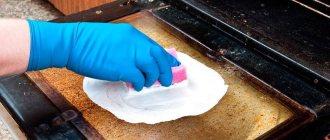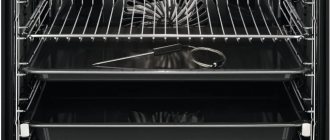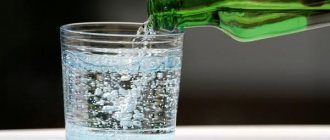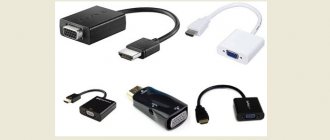Cooking in the oven means not only delicious dishes, but also the need for careful cleaning, because drops of fat accumulate and form a thick layer of dirt. At the same time, there are different types of oven cleaning, and the right choice will ensure their long and reliable service.
Modern ovens have three possible cleaning options, and when choosing such kitchen appliances, be sure to pay attention to this point.
Features of cleaning ovens
During cooking in the oven, in addition to water, fat deposited on the internal surfaces also evaporates. Over time, an increasingly thick layer of contamination forms, which also hardens when cooled, becoming especially difficult to remove. To minimize labor costs during cleaning, you should adhere to the following recommendations:
- wipe the camera after each use;
- use baking sleeves, baking paper and other devices;
- do not line the bottom with foil, as this provokes heat accumulation, which can damage the enamel;
- do not use products that scratch or corrode the enamel coating;
- regularly check the condition of the rubber seal on the door;
- ventilate the oven after each cleaning;
- de-energize the cabinet before starting work.
Cleaning in ovens is carried out through pyrolysis, catalysis and hydrolysis.
Preparing to clean the oven
To make cleaning your oven as easy as possible, you need to prepare for it properly. In this case, you can use one of the suitable remedies, which include baking soda, citric acid or lemon juice, and vinegar.
For example, if the glass on the door is very dirty, you can sprinkle baking soda on it, moisten the resulting layer with water and let it stand in this state for several hours. After this, grease stains will be partially removed by wiping with a soft cloth or sponge. But do not forget that the soda should not dry out and crystallize, as this can lead to mechanical damage. It is generally not recommended to use soda on metal surfaces and when preparing these surfaces it is better to use liquid products.
In preparation for cleaning, you can use various available compounds and products.
Also, before traditional processing of the oven, you need to remove from it all the baking trays, racks and spits in it. These elements also need to be cleaned manually using available compounds, and if possible, use a dishwasher. After all preliminary procedures are completed, you can begin using special oven cleaners.
Tray racks must be cleaned separately
Types of systems
There are three modern oven cleaning methods that work differently and are applicable in different cases. They depend on the type of cabinet and their overview is described in the instructions.
Note! Sometimes traditional oven cleaning is also distinguished, which consists of manually cleaning surfaces using household chemicals. In this case, do not use chlorine-containing or acidic compounds, powders or metal sponges.
Pyrolysis cleaning method
Can only be used in electric ovens, as high temperatures, up to 500°C, are required. This method is the most aggressive, but also the most effective.
Its essence is to heat the oven to maximum temperature, resulting in natural combustion of all contaminants present on the surfaces. After this, the resulting ash is removed with a regular rag. This is how the self-cleaning process occurs.
The pyrolytic system for removing contaminants is considered the most aggressive, but at the same time quite effective.
Important! During the procedure, the oven door is completely locked for the safety of users.
Catalytic purification method
This method is based on a special internal coating of the oven – eco-enamel. It consists of oxides of cerium, copper and manganese, and it itself has a porous structure. Due to this, a purification process is launched, which is called catalysis: when heated from 150 ° C, contaminants begin to decompose into oxygen, water and organic residues. That is, the oven is cleaned simultaneously with cooking.
With the help of catalysis, not only electric ovens are cleaned, but also gas ovens.
However, eco-enamel is not used for all interior surfaces, and some parts, such as the grille and door wall, will have to be cleaned manually.
Hydrolytic cleaning
The essence of this technique is to place a baking sheet with water in a preheated oven, which is left there until the water has completely evaporated. At the same time, under the influence of steam, contaminants are soaked, and, therefore, removed much easier. In essence, this is a lightweight version of conventional manual cleaning. The effectiveness of the method depends on the age and amount of contamination.
Hydrolysis is not self-cleaning since you will have to do most of the work yourself.
Disadvantages of the traditional method
The traditional type of oven cleaning has a number of disadvantages:
- In order to clean the oven, a person spends a lot of effort and energy. It must be remembered that traditional oven cleaning is a process that is carried out manually.
- It is necessary to wash the tray separately from the grill.
- When cleaning with a special powder, there is a risk of damaging the oven surface.
Pros and cons of each system
Each of the systems considered has its own advantages and disadvantages that must be taken into account when choosing.
Pyrolysis
Advantages:
- no mechanical impact or household chemicals required:
- complete removal of any kind of contamination from all internal surfaces, including the door;
- cleansing is achieved the first time;
- process safety;
- the efficiency of the method does not decrease with increasing service life of the oven;
- no need to disassemble the cabinet into parts, separately washing grates, baking sheets, etc.
The essence of pyrolytic cleaning means the combustion of any contamination that may have formed on the walls of the oven.
Disadvantages can be considered:
- release of a pungent odor during the cleaning process;
- significant energy costs with frequent use;
- high cost of the cabinet.
Note! In many models, level pyrolysis is available, that is, it is possible to clean at 200-300 ° C, if the contamination is not so significant.
Catalytic
Has the following advantages:
- cleaning at low temperatures and saving energy;
- long service life, since panels with catalysis last for at least five years;
- ease of dismantling and replacing panels, which are designed for 300 hours of cleaning;
- affordable ovens.
The catalytic one is clearly inferior to the pyrolysis one, but it is cheaper and in any case greatly simplifies the task of keeping the oven clean.
Among the disadvantages are:
- the need to manually clean the grilles and doors;
- the need for repeated cleaning if the contamination is too intense.
Important! If dairy products or sugar get on the surface of the catalytic panel, it will lose its properties.
Hydrolytic
The benefits include:
- suitable for both gas and electric ovens;
- high efficiency until the oven cools down;
- minimal energy consumption;
- savings on cleaning products;
- safety as the doors and body remain cool to the touch.
Additionally, for such ovens they began to sell cleaning products that help soften fats and burnt dough under the influence of hot steam.
Disadvantages can be considered:
- the need for partial manual cleaning;
- low efficiency with dried contaminants.
Important! Use aggressive chemicals to improve cleaning with caution, as this can lead to corrosion on the walls.
Comparison of oven cleaning systems
To determine which oven cleaning system is best, you should rely on frequency of use. So, catalysis or hydrolysis is better suited for infrequent use, since the resulting pollution will be insignificant.
You will have to decide which type of oven cleaning is best in each individual case on your own.
If you plan to use the cabinet frequently, almost daily, then a pyrolytic system would be the best choice. Yes, its initial price is higher than others, but it will quickly make up for it by saving a significant amount of time spent on cleaning. And the energy costs, although they are the highest among analogues, are generally not too high, and for three hours of firing they will amount to about 20 rubles.
This is in the full sense of the word “self-cleaning of the oven” without human intervention - all that is required is to start pyrolysis and then remove the ashes.
What else affects the difficulty of cleaning surfaces?
If you need to choose a model that is not very expensive, then you should choose an oven with a smooth chamber surface. Enamel without roughness and pores does not retain additional contaminants, and it will be easier to remove them. However, in this case you will still have to resort to household chemicals.
Caring for your oven is not difficult and will not take much time if you do it on time.
In general, regardless of the type of oven, proper care of it involves cleaning after each use. This makes the cleaning process much easier.
After each use of the oven, you just need to wash it with detergent and wipe dry, without waiting for a black greasy coating to form.
Instead of a total
In order for dishes cooked in the oven to delight with their taste and unsurpassed aroma, it is necessary to carefully monitor the cleanliness of the equipment. If the equipment has automatic cleaning, the happy owner of such an oven will not have to work hard to keep the device in order. Otherwise, traditional cleaning must be used to remove grease.
After reading the article and understanding each of the methods, it will be easier to choose an oven for the kitchen. You can compare automatic cleaning methods in the table:
| Cleaning system | Temperature | Cleaning area | Expenses |
| Hydrolysis | 50°C-90°C | Entire internal area | Water + detergent |
| Pyrolysis | 500°C | Entire internal area | Lots of electricity |
| Catalysis | 250°С | Side and back walls only | Only buying an oven |
Useful tips
Here are some tips for caring for your oven:
- telescopic guides and the oven door should be washed separately;
- hydrolysis cleaning can be improved using a solution of laundry soap;
- brown deposits that form on the glass of the door are removed with wet soda, which must be left for 15 minutes;
- greasy stains from the surface of the enamel can be removed using baking powder moistened with water, or a mixture of soda and citric acid.
It is not recommended to use steel wool to scrub away dirt to avoid damaging the enamel.
The kitchen in general and the oven in particular must be kept clean at all times. With the right choice of cleaning method, this process will no longer be uncomfortable.
To please yourself and your loved ones with culinary masterpieces that are not spoiled by the unpleasant smell of burning and soot, you should not be lazy and clean the oven regularly.
Traditional methods
Many people use the “grandmother’s method,” which involves cleaning the oven with baking soda and vinegar. To do this, pour table vinegar into a small container. Use a sponge to wipe the walls of the oven and leave for 5-7 minutes. You can wash off the vinegar with soapy water. If there is severe contamination, then you should add one third of a pack of soda. The resulting composition must be thoroughly mixed and applied to the walls. After ten minus, you need to wash it off the surfaces with running water. The oven will amaze the owner with its cleanliness and shine.
Many people add grated laundry soap to soda and vinegar. This composition cleans well the glass on the oven door, as well as the handle.
The old method of cleaning using ammonia does not lose its relevance. To do this, you need to put a bowl of water in the oven. A small amount of ammonia is added to it. Usually a few drops are enough. The door should be closed tightly and the container should be left in the closet overnight.
In the morning you need to wipe the walls with a damp cloth. There will be no trace left of old dirt. The only disadvantage of the method is the tart smell of ammonia. Not everyone wants to smell this scent for a long time. If a person is going to use this method, then children should not be allowed into the room. The apartment needs to be ventilated.
You can use baking soda and hydrogen peroxide for cleaning. The composition is odorless, easy to apply and wash off.
